|
 Secure Site
Secure Site
|
 |
Archive for the 'wabi-sabi' Category
 zen-like garden, a perfect meditation space to use your Zen Meditation Timer A couple of years ago, I heard Diane Ackerman, who writes beautifully about gardens and gardening, discussing her passion on National Public Radio. She and the host agreed that our gardens reflect ourselves, our way of looking at life. I thought about my own garden, and I liked the idea. My lavender was just plumping with sweet-smelling buds, the vinca was fresh and green with perky purple flowers, and the peonies held promise in their tight little fists.
That was in June. By August, the thought of my wild, out-of-control garden reflecting anything about me was slightly horrifying. The lemon balm had run amok; the peony bush—never caged—was limp and trampled. In my backyard, a virulent type of Japanese knotweed had grown into a jungle. As it does every year, nature had taken its course in my yard, and I hadn’t managed to keep it in check. Oh, the temptation to just call it wabi-sabi and leave it at that. It was, after all, very natural in its untidy way.
But I know better. Wabi-sabi is tamed, subdued, and serene. I know that the natural gardens I inevitably fall for—which feel almost untouched by human hands—actually owe their serenity and peace to hours of hard labor. There’s a fine art to creating a garden that feels close to nature but also offers carefully thought-out spots for meditation and reflection, just the right combination of color and blooms throughout the season, and enough structure and muscle to provide interest even in December. One where I can use my Zen Timepiece to each day to do my mindfulness practice. A truly wabi-sabi garden is a creative endeavor of the highest sort. (And some day—when my kids are older and my work life slows down—I vow I’ll accomplish that.)
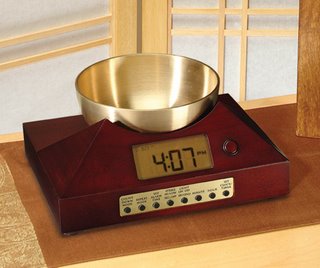 Zen Timepiece with brass singing bowl, a meditation timer I’m slowly working toward my wabi-sabi paradise by putting in plants that are native to my place: slightly weedy black-eyed Susans and columbine, wild rosebushes dug up from my neighbor’s yard, heat-loving yarrow. I’ve welcomed intruders, if they have something to offer and don’t get too pushy. The chokecherry that made its way down from the foothills near my house provides long, delicate white blossoms in springtime and brilliant red-orange leaves in the fall (great branches to bring inside). The mullein that planted itself in my flower garden is tough and phallic, but the bloom of tiny yellow flowers around its stalk in late summer expresses its feminine side.
These indigenous species, adapted to my brutal high-desert climate, can take care of themselves and manage to look good—even in August—without a lot of care and attention. The creative part, for me, is mapping out where they’ll thrive and how they’ll interact with each other and with the humans who visit. And this is where the wabi-sabi spirit really comes in. The wabi-sabi garden embraces and enhances the delicate balance between nature and nurture. It’s not formal and prissy like an English garden—but it’s not overrun with lemon balm and knotweed. Plants are chosen because they belong in that garden, in that climate. They’re allowed to strut their stuff, but they’re expected to be considerate of the plants around them—or be tamed. Brash, blowsy blooms, which generally require a high degree of maintenance, are used sparingly, if at all.
Just as important as what plants are chosen and where they’re placed are the garden’s bones: the stones and pebbles used to create winding paths and delineations, the rusty iron gate beckoning entrance, the trellis teasing vines up its length. In this aspect, gardens offer all sorts of wabi-sabi opportunity. Place an old, broken-down chair in the flowerbeds; let the weather work its magic and the plants grow up around it until it seems rooted and organic to that place. Plant gourds in an old wheelbarrow and let them spill languidly over the sides. Build a stone wall; the very act of placing stone upon stone is a satisfying meditation. Create paths that encourage guests to meander, with stopping points where the vista is ideal.
With the right structure in place, the wabi-sabi garden is as beautiful—if not more so—in December as it is in June. The sculptural bare branches, brittle seedpods, and somber palette of the winter garden are as wabi-sabi as it gets. Stark and naked, the plants stand as vivid symbols of nature’s way: birth, death, rebirth. The blossoms of life are easy to admire; the quiet integrity of plants gathering energy for rebirth takes a deeper appreciation. A stroll through the garden in the dead of winter is a fine place to cultivate that depth.
Adapted from Natural Home Magazine, March/April 2005 Reprinted with permission from The Wabi-Sabi House: The Japanese Art of Imperfect Beauty by Robyn Griggs Lawrence (Clarkson Potter, 2004).
Posted in Bamboo Chime Clocks, Chime Alarm Clocks, Japanese Inspired Zen Clocks, Now & Zen Alarm Clocks, wabi-sabi
 the beauty of imperfection Wabi and sabi refers to a mindful approach to everyday life. Over time their meanings overlapped and converged until they are unified into Wabi-sabi, the aesthetic defined as the beauty of things “imperfect, impermanent, and incomplete”.
Things in bud, or things in decay, as it were, are more evocative of wabi-sabi than things in full bloom because they suggest the transience of things. As things come and go, they show signs of their coming or going and these signs are considered to be beautiful.
In this, beauty is an altered state of consciousness and can be seen in the mundane and simple. The signatures of nature can be so subtle that it takes a quiet mind and a cultivated eye to discern them. In Zen philosophy there are seven aesthetic principles for achieving Wabi-Sabi.
Fukinsei: asymmetry, irregularity
Kanso: simplicity
Koko: basic, weathered
Shizen: without pretense, natural
Yugen: subtly profound grace, not obvious
Datsuzoku: unbounded by convention, free
Seijaku: tranquility
Each of these things are found in nature but can suggest virtues of human character and appropriateness of behaviour. This, in turn suggests that virtue and civility can be instilled through an appreciation of, and practice in, the arts. Hence, aesthetic ideals have an ethical connotation and pervades much of the Japanese culture.
adapted from wikipedia.org
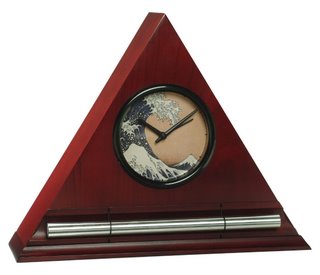 Zen Alarm Clock, Ukiyo-e Hokusai Wave Dial Face Now & Zen Headquarter Store
1638 Pearl Street
Boulder, CO 80302
(800) 779-6383
Posted in Bamboo Chime Clocks, Chime Alarm Clocks, Hokusai Wave, Japanese Inspired Zen Clocks, mindfulness practice, Natural Awakening, Now & Zen Alarm Clocks, Progressive Awakening, wabi-sabi
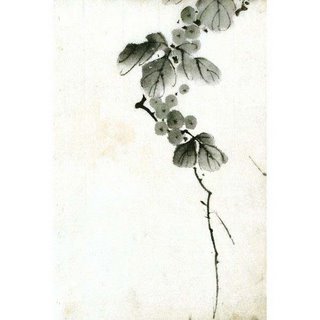 rest and relaxation You know a little too well what your kitchen looks like at 3 a.m. You’ve memorized the light patterns on your bedroom ceiling, counted thousands of sheep, and watched your Zen Alarm Clock for countless hours. And you’ve come to expect the thump of the newspaper at the front door a few minutes after 5.
If this sounds familiar, you’re in good company: Sixty-seven percent of American women surveyed in last year’s National Sleep Foundation poll said they regularly have trouble sleeping. Many of the culprits are hallmarks of our current culture: long work hours, stress, sugar-laden cappuccinos, wanting to fit too much into one day. Several recent reports, including a study published in Social Science & Medicine titled “Is Sleep Really for Sissies?,” have suggested that we value what we do during the day much more than what goes on at night.
But good sleep isn’t something we can afford to take off our to-do list. Like a nutritious diet and exercise, sleep is a foundation for health — not to mention sanity.
“It’s a bedrock,” says Paul Glovinsky, Ph.D., coauthor of “The Insomnia Answer.” As anyone with sleep trouble knows, a single bad night can hamper productivity, memory, even basic conversation skills. But it’s over time that insomnia really takes its toll. “We’ve seen that, in all kinds of ways, deficits accrue when you don’t sleep.”
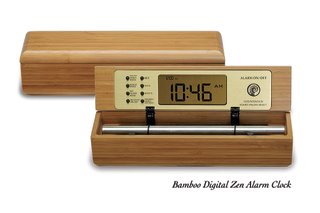 Bamboo Digital Chime Clock, for a progressive awakening Poor sleep may set you up for heart problems, for instance, plus lowered immunity, depression, diabetes, obesity, and chronic pain. One study actually proved that sleep deprivation can damage our mood in a very real way: Compared with those of rested people, the emotional centers of the brain in sleep-deprived people were 60 percent more reactive to negative experiences.
So what’s a droopy-eyed, overcaffeinated, dream-deficient woman to do? Committing to good sleep hygiene is a start. But it also pays to identify your unique sleep profile. There’s no single insomnia pattern; there are many. And delving into the details of yours can help you overcome it.
We went to several sleep experts with some common sleep types, like the person who can’t stop thinking, the one who wakes up at odd times, and the one who keeps finding excuses to push off bedtime (Really? Another episode of “House Hunters?”).
As it turns out, these patterns often have distinct causes and solutions. Don’t be surprised if more than one profile rings true; your patterns may fluctuate. The key is to give some serious thought to your sleep life. Use The Zen Timepiece with the Bowl /Gong to waken you. Try turing it around so that the digital display doesn’t show. The quality of your waking life — not to mention your health — depends on it.
Boulder, Colorado—an innovative company has taken one of life’s most unpleasant experiences (being startled awake by your alarm clock early Monday morning), and transformed it into something to actually look forward to. “The Zen Alarm Clock,” uses soothing acoustic chimes that awaken users gently and gradually, making waking up a real pleasure.
The luxurious awakening provided by the Zen Alarm Clock is part of the growing preference for things natural—natural foods, natural fibers, and now, natural acoustic sounds. Like organic tomatoes in your salad, the organic sounds of the Zen Alarm Clock’s sweet acoustic chimes are truly a gourmet experience.
What makes this gentle awakening experience so exquisite is the sound of the natural acoustic chime, which has been tuned to produce the same tones as the tuning forks used by musical therapists. According to the product’s inventor, Steve McIntosh, “once you experience this way of being gradually awakened with beautiful acoustic tones, no other alarm clock will ever do.”
Adapted from Body + Soul Magazine, May 2008 by Sarah Schmelling
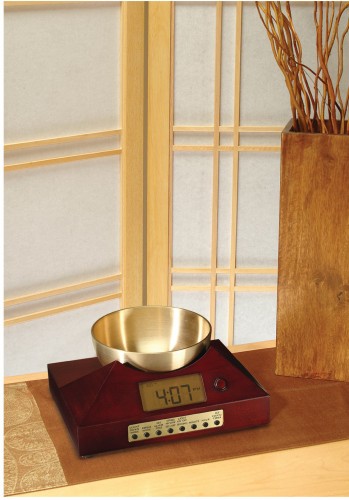 Zen Alarm Clock for a Gentle Awakening with a Bowl Gong and Mindfulness Timer Now & Zen’s Alarm Clock Shop
1638 Pearl Street
Boulder, CO 80302
(800) 779-6383
Posted in Bamboo Chime Clocks, Chime Alarm Clocks, Japanese Inspired Zen Clocks, Natural Awakening, Now & Zen Alarm Clocks, Progressive Awakening, Sleep Habits, Ukiyo-e, wabi-sabi, Well-being, Zen Timepiece by Now & Zen, Zen Timers
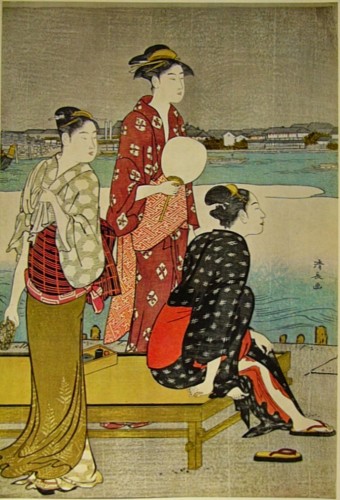 Kiyonaga Riverside Ukiyo-e The phrase iki is generally used in Japanese culture to describe qualities that are aesthetically appealing and when applied to a person, what they do, or have, constitutes a high compliment.
Iki is not found in nature. While similar to wabi-sabi in that it disregards perfection, iki is a broad term that encompasses various characteristics related to refinement with flair.
The tasteful manifestation of sensuality can be iki.
Etymologically, iki has a root that means pure and unadulterated. However, it also carries a connotation of having an appetite for life. Iki is never cute.
The basis of iki is thought to have formed among urbane commoners (chonin) in Edo in the Tokugawa period (1603 to 1868). Iki is sometimes misunderstood as simply “anything Japanese”, but it is actually a specific aesthetic ideal, distinct from more ethereal notions of transcendence or poverty. As such, samuri, for example, would typically, as a class, be considered devoid of iki, (see yabo).
At the same time, individualistic warriors are often depicted in contemporary popular imagination as embodying the iki ideals of a clear, stylish manner and blunt, unwavering directness. The term became widespread in modern intellectual circles through the book The Structure of “Iki” (1930) by Kuki Sukuzo.
adapted from wikipedia.org
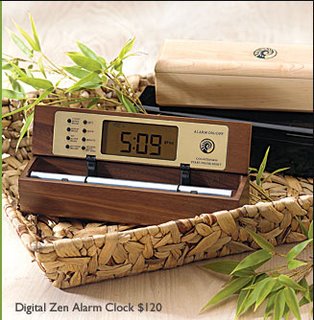 Digital Zen Timers, a mindfulness practice tool Now & Zen
1638 Pearl Street
Boulder, CO 80302
Posted in Bamboo Chime Clocks, Beauty, Meditation Tools, mindfulness practice, Natural Awakening, Now & Zen Alarm Clocks, Progressive Awakening, wabi-sabi, Yoga Timer, Zen Timers
 yugen, a profound mysterious sense of the beauty of the universe Yūgen is an important concept in traditional Japanese aesthetics. The exact translation of the word depends on the context. In the Chinese philosophical texts the term was taken from, yūgen meant “dim”, “deep” or “mysterious”. In the criticism of Japanese waka poetry, it was used to describe the subtle profundity of things that are only vaguely suggested by the poems, and was also the name of a style of poetry (one of the ten orthodox styles delineated by Fujiwara no Teika in his treatises).
Yugen suggests that beyond what can be said but is not an allusion to another world. It is about this world, this experience. All of these are portals to yugen:
“To watch the sun sink behind a flower clad hill. To wander on in a huge forest without thought of return. To stand upon the shore and gaze after a boat that disappears behind distant islands. To contemplate the flight of wild geese seen and lost among the clouds. And, subtle shadows of bamboo on bamboo.”
Zeami Motokiyo
Yugen is said to mean “a profound, mysterious sense of the beauty of the universe… and the sad beauty of human suffering”.
adapted from wikipedia.org
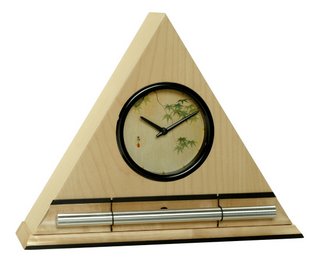 Japanese Maple Leaves Dial Face, the Zen Alarm Clock for a progressive awakening Now & Zen
1638 Pearl Street
Boulder, CO 80302
Posted in Bamboo Chime Clocks, Chime Alarm Clocks, Goodness, Meditation Timers, Meditation Tools, mindfulness practice, Natural Awakening, Now & Zen Alarm Clocks, Progressive Awakening, wabi-sabi, Zen Timers
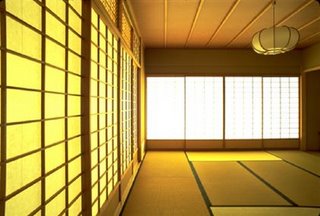 tatami-floored tea room for tea ceremony ...the art of ‘way of tea’ inspired by Japan…
By the 16th century, tea drinking had spread to all levels of society in Japan.
Almost any place where implements for the making and serving of the tea can be set out, and where the host can make the tea in the presence of the seated guest(s), can be used as a venue for tea.
A tatami-floored room with adjacent mizuya space for the host to conduct preparations of the various items to be used is required for a full chaji.
Many schools of Japanese tea ceremony have evolved through the long history of chadō and are active today.
from wikipedia.org
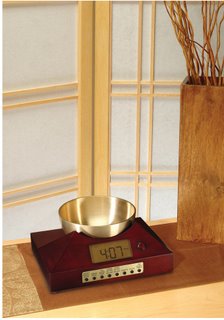 Zen Timepiece, a chime alarm clock and timer in cherry finish Now & Zen Headquarters
1638 Pearl Street
Boulder, CO 80302
(800) 779-6383
Posted in Chime Alarm Clocks, Japanese Inspired Zen Clocks, Meditation Tools, Natural Awakening, Now & Zen Alarm Clocks, Tea Ceremony, wabi-sabi, Zen Timepiece by Now & Zen, Zen Timers
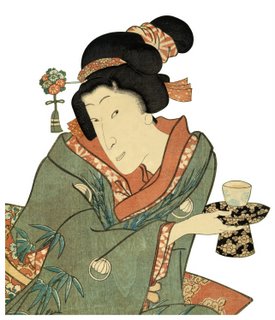 ukiyo-e woodblock print: traditional tea ceremony in kimono by master Utagawa Toyokuni Seasonality and the changing of the seasons are important in the tea ceremony from Japan. Traditionally the year is divided by tea practitioners into two main seasons: the sunken hearth season, constituting the colder months (traditionally November to April), and the brazier season, constituting the warmer months (traditionally May to October). For each season, there are variations in the temae performed and utensils and other equipment used.
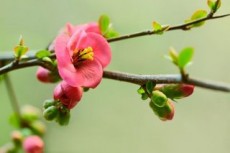 cherry blossoms wikipedia.org
Now & Zen Headquarter Store
1638 Pearl Street
Boulder, CO 80302
 Bamboo Zen Clock and Timers
Posted in Japanese Inspired Zen Clocks, Now & Zen Alarm Clocks, Tea Ceremony, wabi-sabi, Zen Timers
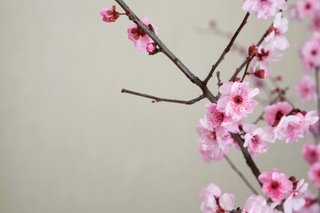 nothing lasts, nothing is finished, and nothing is perfect wabi-sabi, the art of imperfection
Wabi-sabi is the most conspicuous and characteristic feature of traditional Japanese beauty and it “occupies roughly the same position in the Japanese pantheon of aesthetic values as do the Greek ideals of beauty and perfection in the West. “
“If an object or expression can bring about, within us, a sense of serene melancholy and a spiritual longing, then that object could be said to be wabi-sabi.”
The words wabi and sabi do not translate easily. Wabi originally referred to the loneliness of living in nature, remote from society; sabi meant “chill”, “lean” or “withered”. Around the 14th century these meanings began to change, taking on more positive connotations. Wabi now connotes rustic simplicity, freshness or quietness, and can be applied to both natural and human-made objects, or understated elegance.
“It (wabi-sabi) nurtures all that is authentic by acknowledging three simple realities: nothing lasts, nothing is finished, and nothing is perfect.”
 - Maple Zen Clock
from wikipedia.org
Now & Zen Headquarters
1638 Pearl Street
Boulder, CO 80302
(800) 779-6383
Posted in Japanese Inspired Zen Clocks, wabi-sabi
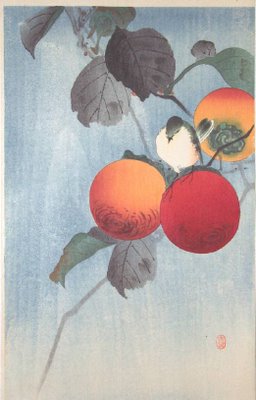 Koson's Nutcraker Atop a Persimmon, Ukiyo-e Gallery
Wabi- sabi, the art and practice of honoring the imperfect
Many Japanese arts over the past thousand years have been influenced by Zen and Mahayana philosophy, particularly acceptance and contemplation of the imperfection, constant flux, and impermanence of all things. Such arts can exemplify a wabi-sabi aesthetic.
Here is an incomplete list:
- honkyoku (traditional shakuhachi music of wandering Zen monks)
- ikebana (flower arrangement)
- Japanese gardens, Zen gardens, and bonsai (tray gardens)
- Japanese poetry, particularly haiku
- Japanese pottery, notably Hagi ware
- Japanese tea ceremony
- Bonsai the Japanese art of miniature trees
from wikipedia.org
 Zen Timepiece with brass bowl
Posted in Japanese Inspired Zen Clocks, Now & Zen Alarm Clocks, wabi-sabi
|
|
|
|